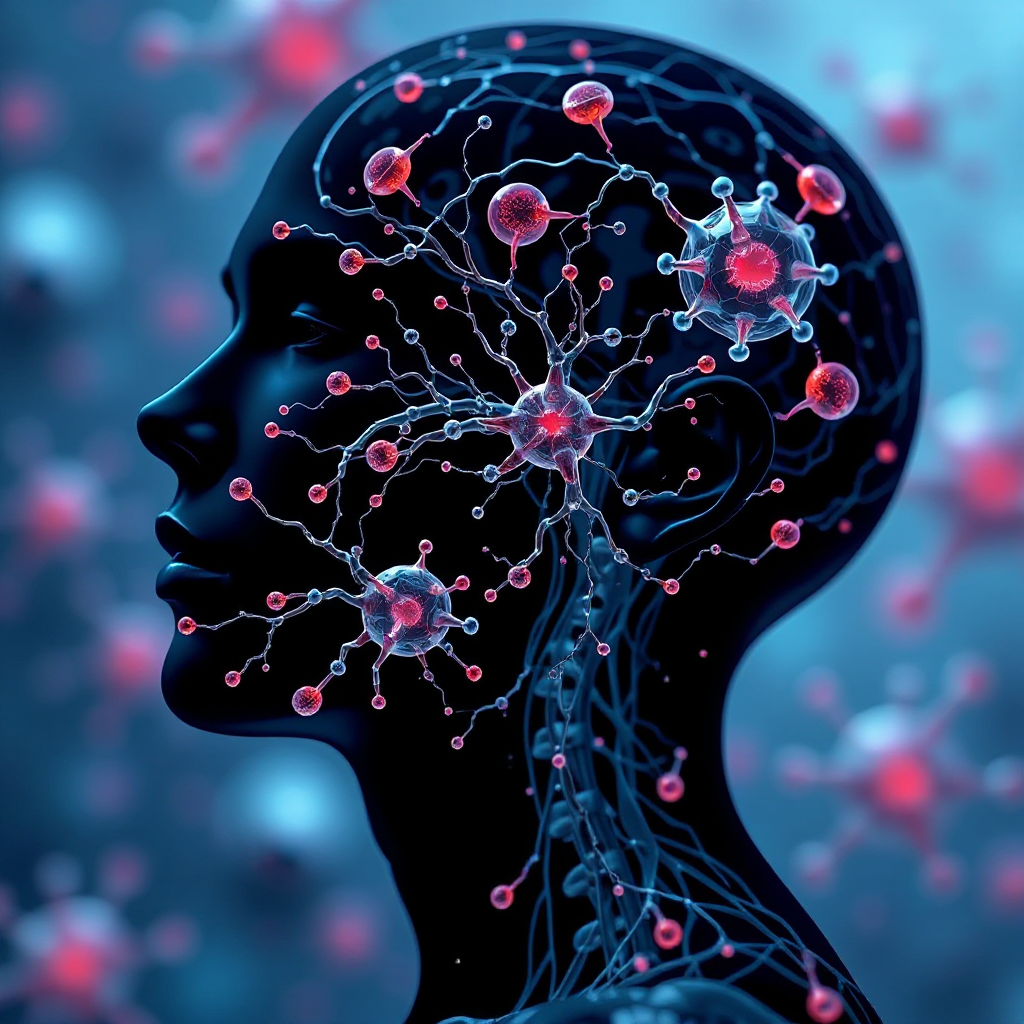How Stem Cell Therapy Revolutionizes Cancer Treatment in 2025

Cancer treatment with stem-cell therapy is revolutionizing approaches in 2025. By utilizing the remarkable regenerative and reparative properties of stem cells, this therapy brings new hope to patients facing aggressive cancers. For instance, the rise of CAR T-cell therapy has significantly reduced the need for autologous stem cell transplants in cases like diffuse large B-cell lymphoma (DLBCL). This development underscores the transformative progress in cancer treatment with stem-cell therapy. With its precision and ability to repair damaged tissues, stem-cell therapy continues to shine as a groundbreaking innovation in the field of oncology.
Key Takeaways
Stem cell therapy gives hope to cancer patients by fixing damaged tissues and boosting the immune system.
Blood stem cell transplants help make new blood cells after chemotherapy, helping patients recover faster.
Custom treatments using special stem cells (iPSCs) reduce side effects and work better.
Using stem cells with CAR-T cell therapy strengthens the immune system, making cancer treatment more accurate.
Scientists are still studying and testing stem cell therapy to find more ways to treat cancer.
Understanding Cancer Treatment with Stem-cell Therapy

What Are Stem Cells?
Types of stem cells: embryonic, adult, and induced pluripotent stem cells (iPSCs)
Stem cells are unique because they can transform into different types of cells in the body. You can think of them as the body’s raw materials, capable of creating specialized cells like blood, brain, or muscle cells. There are three main types of stem cells: embryonic, adult, and induced pluripotent stem cells (iPSCs). Embryonic stem cells come from early-stage embryos and have the potential to become any cell type. Adult stem cells, found in tissues like bone marrow, are more limited but still play a vital role in repair and regeneration. iPSCs are adult cells reprogrammed to behave like embryonic stem cells, offering a versatile and ethical option for research and therapy.
Key properties: self-renewal and differentiation
Stem cells possess two defining characteristics that make them essential for cancer treatment. First, they can self-renew, meaning they can divide and produce more stem cells. Second, they can differentiate into specialized cells needed for repair or regeneration. These properties allow stem cells to regenerate tissues damaged by cancer therapies and target cancer cells directly. However, cancer stem cells (CSCs), which arise from mutations in normal stem cells, can also self-renew and contribute to tumor growth, presenting a challenge in treatment.
Role of Stem Cells in Cancer Treatment
Restoring blood cell production after chemotherapy or radiation
Chemotherapy and radiation often damage healthy cells, especially in the bone marrow, where blood cells are produced. Stem cells can restore this production by replacing damaged cells with healthy ones. This process helps you recover faster and reduces the risk of infections or anemia during cancer treatment with stem-cell therapy.
Boosting the immune system to combat cancer
Stem cells also play a critical role in enhancing your immune system. Recent research shows that human pluripotent stem cells can be derived from exhausted T lymphocytes, which are dysfunctional immune cells. These stem cells can generate new, patient-specific immune cells with improved anti-tumor activity. This ability to regenerate and strengthen the immune response makes stem cells a powerful tool in fighting cancer.
Differentiating into cells that target and repair cancer-affected tissues
Stem cells can differentiate into specialized cells that target cancer cells or repair tissues damaged by the disease. For example, they can be programmed to deliver drugs directly to tumors, minimizing harm to healthy tissues. This precision makes cancer treatment with stem-cell therapy more effective and less invasive.
Key Therapies in Cancer Treatment with Stem-cell Therapy
Hematopoietic Stem Cell Transplantation
Autologous vs. allogeneic transplants
Hematopoietic stem cell transplantation plays a vital role in cancer treatment with stem-cell therapy. It involves replacing damaged or destroyed bone marrow with healthy stem cells. You can choose between two main types of transplants: autologous and allogeneic.
In autologous transplants, doctors collect your stem cells before treatment and return them to your body afterward. This method reduces the risk of immune rejection but may reintroduce cancer cells.
Allogeneic transplants use stem cells from a donor with compatible HLA markers. While this approach avoids reintroducing cancer cells, it requires careful matching to prevent complications like graft-versus-host disease (GVHD).
Each option has its benefits and challenges, and your doctor will recommend the best choice based on your condition.
Replacing damaged bone marrow and blood cells
Chemotherapy and radiation often damage your bone marrow, which produces blood cells. Hematopoietic stem cell transplantation restores this function by replacing damaged cells with healthy ones. This process helps your body recover faster and reduces the risk of infections, anemia, and bleeding during cancer treatment.
Differentiation Therapy
Transforming cancer cells into non-cancerous cells
Differentiation therapy focuses on transforming cancer cells into normal, non-cancerous cells. For example, in acute promyelocytic leukemia (APL), doctors use all-trans retinoic acid (ATRA) combined with arsenic trioxide (ATO). This combination has achieved cure rates exceeding 95%. By reprogramming cancer cells to behave like normal cells, differentiation therapy offers a less invasive and highly effective treatment option.
Success stories in leukemia and lymphoma
Differentiation therapy has shown remarkable success in treating blood cancers like leukemia and lymphoma. In APL, patients have experienced long-term remission thanks to this innovative approach. These success stories highlight the potential of cancer treatment with stem-cell therapy to transform lives.
Immunotherapy with Stem Cells
Generating immune cells to fight cancer
Stem cells can generate immune cells that target and destroy cancer. For instance, researchers have used stem cells to create T cells with enhanced anti-tumor activity. These immune cells can recognize and attack cancer cells more effectively, boosting your body's natural defenses.
Combining stem cells with CAR-T cell therapy
Combining stem cells with CAR-T cell therapy has opened new doors in cancer treatment. CAR-T therapy involves modifying your T cells to target specific cancer cells. When paired with stem cells, this approach becomes even more powerful, offering a personalized and precise treatment option. This combination represents a significant advancement in cancer treatment with stem-cell therapy.
Emerging Therapies
Personalized treatments using iPSCs
Induced pluripotent stem cells (iPSCs) are transforming cancer treatment by offering personalized therapies tailored to your unique needs. These stem cells, reprogrammed from your own adult cells, can differentiate into various cell types. This versatility allows researchers to create patient-specific treatments that minimize the risk of rejection and side effects. For example, iPSCs can be used to generate immune cells, such as T cells or natural killer (NK) cells, which are designed to target and destroy cancer cells. By using specific cytokines, scientists can enhance the anti-tumor activity of these immune cells, making them more effective in combating cancer.
Researchers at the Harvard Stem Cell Institute have also explored the potential of iPSCs in treating metastatic cancers. In a groundbreaking study, they developed a mouse model to study breast cancer metastasis to the brain. Their findings revealed that stem cell-based therapies could eliminate metastatic cells in the brain and improve survival rates. This research highlights the immense potential of iPSCs in addressing even the most challenging forms of cancer.
Stem cell-derived exosomes for targeted drug delivery
Stem cell-derived exosomes are emerging as a powerful tool for targeted drug delivery in cancer therapy. These nano-sized vesicles, released by mesenchymal stem cells (MSCs), act as natural carriers for therapeutic agents. They can deliver anti-tumor mRNA, siRNAs, or small molecule drugs directly to the tumor site. This precision reduces damage to healthy tissues and enhances the effectiveness of cancer treatment.
Exosomes also play a crucial role in regulating cell-to-cell interactions within the tumor microenvironment. By targeting the tumor niche, they can silence tumor-related genes or amplify anti-tumor effects. For instance, MSC-derived exosomes have shown promise in delivering drugs that disrupt cancer pathways, offering a less invasive and highly targeted approach to treatment. These advancements demonstrate how stem cell-derived exosomes are reshaping cancer treatment with stem-cell therapy.
Challenges and Limitations of Stem Cell Therapy
Ethical Considerations
Debates over embryonic stem cell use
The use of embryonic stem cells (hESCs) in cancer treatment raises several ethical concerns. These include:
The moral status of embryos, as their destruction sparks debates about the ethics of using hESCs.
Issues surrounding informed consent, particularly ensuring donors fully understand the implications.
Justice in access to therapies, as equitable distribution of treatments remains a challenge.
The need for strict oversight in research and clinical applications to ensure ethical compliance.
These concerns highlight the importance of balancing innovation with ethical responsibility.
Balancing innovation with ethical concerns
Researchers strive to balance progress in stem cell therapy with ethical considerations. They focus on minimizing harm to patients and ensuring informed consent during clinical trials. Addressing justice concerns, such as equitable access to therapies, remains a priority. By maintaining transparency and fairness, researchers aim to advance cancer treatment responsibly.
Technical and Clinical Challenges
Risks of tumor formation from stem cells
Stem cell therapy faces technical challenges, including the risk of tumor formation. Stem cells, especially pluripotent ones, can sometimes grow uncontrollably, leading to new tumors. This risk complicates their use in cancer care, as therapies must target cancer without inadvertently encouraging tumor growth.
Ensuring safety and efficacy in clinical trials
Clinical trials for stem cell therapies must ensure both safety and efficacy. Researchers rigorously test treatments to confirm they work as intended and do not cause harm. This process can be lengthy and expensive, but it is essential for developing reliable therapies. You benefit from these efforts, as they ensure treatments meet the highest standards.
Accessibility and Cost
High costs of stem cell therapies
Stem cell therapies are expensive, often costing between $15,000 and $30,000 for expanded cell products. A single injection can cost around $4,000, with additional treatments priced at $800 each. Intravenous treatments start at $27,500, making them inaccessible for many. These high costs create barriers for patients seeking advanced cancer treatments.
Limited availability in underserved regions
Access to stem cell therapies is limited in underserved regions. High costs and a lack of specialized facilities prevent many from benefiting. This disparity highlights the need for broader availability and affordability to ensure everyone can access cutting-edge cancer treatments.
Cancer treatment with stem-cell therapy holds immense promise, but addressing these challenges is crucial for its widespread success.
Advancements and Future Potential of Stem Cell Therapy

Genetic Engineering and CRISPR
Enhancing cancer-fighting properties of stem cells
Genetic engineering, particularly through CRISPR technology, is transforming how stem cells are used in cancer treatment. CRISPR allows scientists to edit genes with precision, enabling you to benefit from stem cells that are genetically optimized to fight cancer. For example, researchers can modify stem cells to correct mutations or enhance their ability to target and destroy cancer cells. This advancement not only improves the effectiveness of therapies but also opens the door to potential cures for genetic disorders like cystic fibrosis and sickle cell anemia.
Reducing risks of rejection and side effects
CRISPR also reduces the risks associated with stem cell therapies. By tailoring stem cells to your genetic profile, the likelihood of immune rejection decreases significantly. This personalized approach ensures that treatments are safer and more effective. Additionally, precise genetic modifications help minimize side effects, making cancer treatment with stem-cell therapy more accessible and reliable for patients like you.
Personalized Medicine
Tailoring therapies to individual patients
Personalized medicine is revolutionizing cancer care by shifting from one-size-fits-all treatments to strategies tailored to your unique genetic and biological profile. This approach ensures that stem cell therapies are more effective and reduce potential side effects. Key advancements include:
Using your genetic information to design therapies that match your specific needs.
Leveraging induced pluripotent stem cells (iPSCs) to create patient-specific treatments.
Developing disease models with iPSCs to predict how you might respond to therapy.
Using stem cell models to predict treatment outcomes
Stem cell models derived from iPSCs provide valuable insights into how your body may react to different treatments. These models allow researchers to test therapies in a controlled environment before applying them to you. This predictive capability enhances the precision of cancer treatments and reduces the risk of adverse reactions.
Clinical Trials and Innovations
Promising results in blood cancers and solid tumors
Recent clinical trials have shown encouraging results in treating both blood cancers and solid tumors. For instance, hematopoietic stem cell transplantation has demonstrated success in restoring blood cell production after chemotherapy. However, challenges like chronic graft-versus-host disease (GVHD) and the risk of cancer stem cell formation highlight the need for ongoing research. These trials underscore the potential of stem cell therapies while emphasizing the importance of addressing their limitations.
Expanding applications of stem cell therapy in oncology
The applications of stem cell therapy in oncology continue to grow. Researchers are exploring innovative uses, such as combining stem cells with immunotherapies like CAR-T cell therapy. This combination enhances the immune system's ability to target cancer cells. Additionally, stem cell-derived exosomes are being developed for targeted drug delivery, offering a less invasive and highly precise treatment option. These advancements pave the way for a future where stem cell therapies play a central role in cancer care.
Stem cell therapy is reshaping how you approach cancer care by offering innovative and personalized solutions. Experts highlight that advancements in understanding stemness properties in leukemia and clonal hematopoiesis are improving treatment responses for solid tumors. This evolution underscores the growing role of stem cell therapy in oncology. For example, the shift from autologous stem cell transplants to CAR T-cell therapy reflects this progress, as seen in the table below:
Year | Autologous Stem Cell Transplants | CAR T-cell Therapy Treatments |
|---|---|---|
2019 | 537 | |
2022 | 1548 | 809 |
The potential of cancer treatment with stem-cell therapy continues to expand, offering hope for better outcomes and a brighter future in oncology.
FAQ
What makes stem cell therapy different from traditional cancer treatments?
Stem cell therapy focuses on repairing and regenerating damaged tissues. Unlike traditional treatments like chemotherapy, which target cancer cells but harm healthy ones, stem cell therapy uses precision to minimize side effects. It also enhances your immune system to fight cancer more effectively.
Are stem cell therapies safe for cancer treatment?
Stem cell therapies undergo rigorous testing in clinical trials to ensure safety and efficacy. While risks like tumor formation exist, advancements in genetic engineering and CRISPR reduce these concerns. Always consult your doctor to understand the risks and benefits specific to your condition.
How long does it take to see results from stem cell therapy?
The timeline varies depending on the type of cancer and therapy used. Some patients notice improvements within weeks, while others may take months. Your doctor will monitor your progress and adjust the treatment plan as needed to achieve the best outcomes.
Can stem cell therapy cure cancer completely?
Stem cell therapy shows promise in treating and managing cancer, but it is not a guaranteed cure. It works best when combined with other treatments like immunotherapy or chemotherapy. Ongoing research aims to improve its effectiveness and expand its applications.
Is stem cell therapy covered by insurance?
Insurance coverage for stem cell therapy depends on your provider and location. Some plans cover specific procedures like hematopoietic stem cell transplants. Contact your insurance company to confirm coverage and explore financial assistance options if needed.
See Also
Understanding Hemangioblastoma: Key Characteristics and Insights
An In-Depth Overview of Various Cancer Types Available
Decoding Glioblastoma: Essential Features You Should Know
Exploring Brainstem Glioma: Different Types and Their Impacts
Choriocarcinoma: Definition, Symptoms, and Treatment Options
